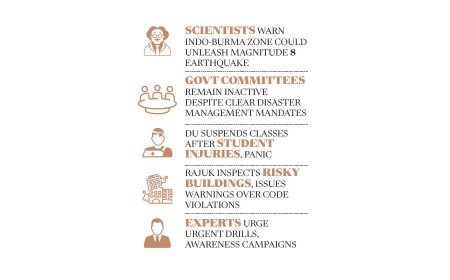The Battle of Human Life: Isolation and Solitude
"As an individual, the body is solitary; as a soul, it is never alone." (Hesse, 1927) "The most profound evidence of life is the ability to persevere and evolve." (Eliot, 1943)

Hermann Hesse's Steppenwolf (1927) delves into the profound alienation and inner turmoil of its protagonist, Harry Haller, as he navigates the dualities of his nature. Caught between his primal urges and societal expectations, Harry experiences a deep sense of isolation and disconnection, themes that resonate far beyond the confines of the novel. In many ways, Harry’s emotional and psychological struggles reflect the universal human experience of alienation throughout history.
From the dawn of civilization, individuals have faced loneliness while seeking meaning in a world that seems indifferent to their personal struggles. Hesse’s exploration of alienation serves as a powerful reminder that loneliness is not merely an emotional state but an essential aspect of the human condition. Therefore, the battle against loneliness and alienation is not only a central theme of Steppenwolf, but a fundamental element of human life itself.
Harry Haller's internal conflict arises from his perception of himself as an outsider in a society he cannot comprehend. His self-characterization as the "Steppenwolf" symbolizes his untamed nature, which is in constant tension with the conformities of bourgeois society. In one of the novel's most poignant passages, Haller reflects, “I cannot understand what pleasures and joys they are that drive people to the overcrowded railways and hotels, into the packed cafés with the suffocating and oppressive music, to the Bars and variety entertainments” (Hesse, 1927). This disillusionment with modern life highlights a deep alienation that many individuals experience in their search for meaning and fulfillment.
The concept of alienation is closely linked to the individual's struggle against loneliness. As Haller confesses, “I am in truth the Steppenwolf that I often call myself; that beast astray who finds neither home nor joy nor nourishment in a world that is strange and incomprehensible to him” (Hesse, 1927).
This sense of disconnection from both society and oneself is a recurring theme in existential literature, reflecting the universal condition of human beings. From the early days of civilization to the present, humans have often faced the realization that they are, in many ways, alone in the world—isolated in their consciousness, unable to bridge the gap between themselves and the rest of humanity.
Loneliness is not just an emotional state, but a profound inner struggle. This is emphasized in T.S. Eliot's poem The Love Song of J. Alfred Prufrock (1915), where the title character’s internal battle with alienation is evident. Prufrock’s fear of rejection and his inability to connect with others encapsulate the timeless human struggle to overcome isolation: “Do I dare disturb the universe?” (Eliot, 1915). Like Hesse's Haller, Prufrock’s alienation stems from his awareness of the vast chasm between himself and the world around him. Both characters are burdened by the understanding that their personal journeys—whether toward self-discovery or connection—are fraught with isolation.
The Historical Context of Loneliness
Loneliness has been a persistent struggle throughout history. From ancient mythologies to modern philosophical thought, individuals have sought to understand and cope with existential questions surrounding their place in the world.
In the early stages of human history, isolation was a defining feature as tribes and communities began to form. The development of societies, in many ways, was a response to the overwhelming solitude of early existence. Yet, even as societies grew and became more interconnected, the underlying experience of loneliness remained an integral part of the human condition.
The Industrial Revolution, which began in the 18th century, exacerbated feelings of alienation. As societies shifted from agrarian life to urbanization, people found themselves distanced from their traditions and alienated from the natural world. As Hesse writes through Haller, “Every age, every culture, every custom and tradition has its own character, its own weakness and its own strength...but that did not help me at all” (Hesse, 1927).
This sense of being torn between two worlds—the old, familiar ways and the modern forces of alienation—resonates deeply in Steppenwolf. It reflects how many individuals throughout history have felt displaced or torn between conflicting identities, cultures, and expectations.
This duality—between competing forces and expectations—also appears in T.S. Eliot’s Four Quartets (1943). In Burnt Norton, Eliot examines the theme of time and its impact on human existence, writing, “Time present and time past / Are both perhaps present in time future” (Eliot, 1943).
Eliot’s cyclical and fragmented view of time mirrors the existential tension between isolation and connection. Like Hesse’s protagonist, Eliot’s characters grapple with a world that continually changes, seeking meaning in the transient and often contradictory nature of existence. The feeling of being caught between eras, ideologies, and personal desires reflects the isolation that many experience in a world that seems to be in constant flux.
The Necessity of Confronting Loneliness
Despite the overwhelming nature of loneliness and alienation, both Hesse and Eliot suggest that individuals should not succumb to despair. Haller’s journey in Steppenwolf is ultimately one of self-discovery, where he learns to reconcile the opposing parts of his nature. Through exploring different facets of his identity and engaging with the world, he realizes that loneliness is not something to fear but an intrinsic part of the human experience to be faced and transcended.
Haller’s journey is not a surrender to alienation but an attempt to embrace his full, complex self. This message is clearly conveyed in Hesse’s description of the protagonist’s internal dialogue: “You may yourself as an artist develop the game of your life and lend it animation. You may complicate and enrich it as you please” (Hesse, 1927). The central idea here is clear: the fight against loneliness is not only about survival, but also about living authentically and fully.
Similarly, T.S. Eliot’s Four Quartets offers hope in the face of isolation. In East Coker, Eliot writes, “The greatest proof of life is to endure and to transform” (Eliot, 1943). This resonates with the core message of Steppenwolf: the battle against alienation is not a fight to be lost, but an opportunity for personal growth and transformation. The act of enduring loneliness, confronting existential questions, and embracing one’s true nature is not only an act of courage but a form of artistic and spiritual redemption.
The themes of loneliness, alienation, and the pursuit of self-realization are not just central to Hesse’s Steppenwolf but are deeply embedded in the history of human existence. From the earliest civilizations to modern existential literature, humanity has wrestled with the isolation that comes with being an individual in a vast, indifferent world. As Hesse’s Harry Haller puts it, “As a body everyone is single, as a soul never” (Hesse, 1927).
In both Hesse and Eliot’s works, it is suggested that while loneliness is an inevitable part of life, it should not be viewed as a source of despair, but as an invitation to transcendence. By confronting the forces that alienate us and embracing our true selves, we can transform our isolation into a wellspring of strength and creative potential. The struggle with loneliness, therefore, is not merely an obstacle to be overcome, but a profound aspect of the human condition that compels us to live more authentically and meaningfully.
What's Your Reaction?



















































































